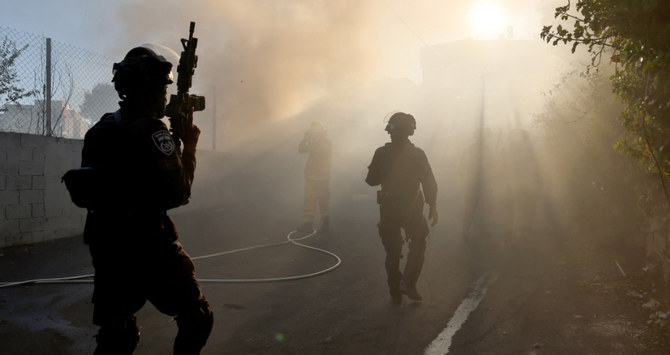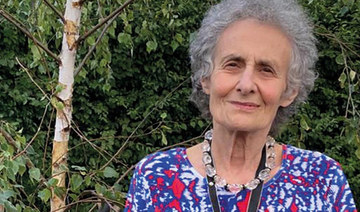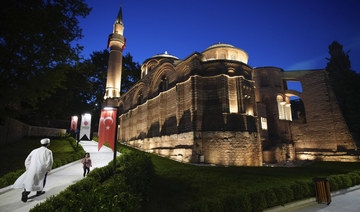CHICAGO: Attorneys for a 26-year-old Jewish woman who was fired from her teaching job at a New York Synagogue for criticizing Israel told Arab News that the lawsuit she has filed to get her job back shines a light on the important difference between criticism of the actions of the Israeli state and anti-Semitism.
Jessie Sander was hired last year to teach at Westchester Reform Temple in Scarsdale, New York. Weeks later, on July 21, she was fired because of her criticism, in a post on a personal blog, of Israel’s government.
On Jan. 25, Sander filed a lawsuit arguing that Temple leaders had dismissed her in violation of a New York state labor law “which prohibits an employer from firing an employee because of a legal, recreational activity performed without compensation, off the premises of the employer, and without reference to the employer’s property,” according to attorney Robert Herbst of Herbst Law. He noted that only a few states have similar laws.
“We are trying to say to established Jewish institutions, temples, schools, you can’t excommunicate your young people — who grew up and were educated by your institutions in Jewish religious and moral principles — you can’t excommunicate them because they want to apply them in good faith to what they think is wrongdoing on behalf of a Jewish State in its treatment of Palestinians,” Herbst told Arab News.
“If you do it, there will be a cost and we will call you out for it. That’s what we are trying to say.
“There have been a slew of really well-meaning people who have been fired, canceled or harmed because they are trying to uphold the principles that they were taught, the moral and religious tenets of their faith and it is a shame.”
In a statement to Arab News, Sander said: “I’m bringing this lawsuit because I am deeply invested in keeping Jewish institutions thriving, pluralistic spaces that welcome all Jews.
“It’s important to keep wrestling with Zionism and having difficult conversations, even if it makes us uncomfortable.”
In her blog post, Sander wrote: “We reject the notion that Zionism is a value of Judaism. Zionism is not equivalent to, or a necessary component of, Jewish identity. To conflate Zionism and Judaism is not only inaccurate but dangerous; if we do not understand the difference between settler colonialism and religion, we run the risk of spreading deeply anti-Semitic narratives about the nature of Judaism. ... As American Jews, we demand an end to American funding of Palestinian genocide. ... Jews in the United States must speak out against genocide in our name and state-sponsored murder disguised as support for Jewish people.”
Sanders is demanding she be reinstated to her position as a Jewish Learning Lab teacher at the Temple. Herbst said her case is the first time that this New York labor law has been used by a plaintiff in a lawsuit in this particular factual context.
“We are hoping that the message will get sent,” he said.
In the wider context, he said that the case highlights the important distinction between legitimate political criticism and anti-Semitic comments.
“This is the distinction we activists in the field are trying to make clear in these statements about anti-Semitism that have come up,” said Herbst.
“The establishment institutions behind the first definition are trying to say that any criticism of Israel is anti-Semitic. What those of us who support the Jerusalem Declaration second-grade statement against anti-Semitism are trying to say is, no, no, no, you have to distinguish carefully between criticisms of the government of Israel and the actions that Israel takes as a State, from hatred of Israel, the Jewish people.”
He added that Jewish people such as Sander who criticize the policies of the Israeli government should not be punished for their opinions.
“It’s un-Jewish policies,” said Herbst. “That’s the thing, that’s the amazing thing, is that Israel, the state, does not conform to Jewish practice. Those Jews who point that out are not worthy of excommunication, they deserve to be part of the community.”
He added that 80 prominent Jewish leaders and rabbis have signed a letter in Sander’s defense and that her supervisor David E. Levy, an associate rabbi and JLL director, had expressed support for many of her views during a meeting with her on July 15 last year. But a week later, during a zoom meeting that included the temple’s executive director, Eli Kornreich, she was fired.
Herbst said no court date has been set for the case. Representatives of Westchester Reform Temple did not respond to our inquiries.
This week, rights organization Amnesty International, which was awarded the Nobel Peace Prize in 1977, accused the Israeli government of enforcing apartheid practices targeting Palestinians. In response, Israeli leaders and many pro-Israel institutions denounced the accusations as “anti-Semitic.”



























